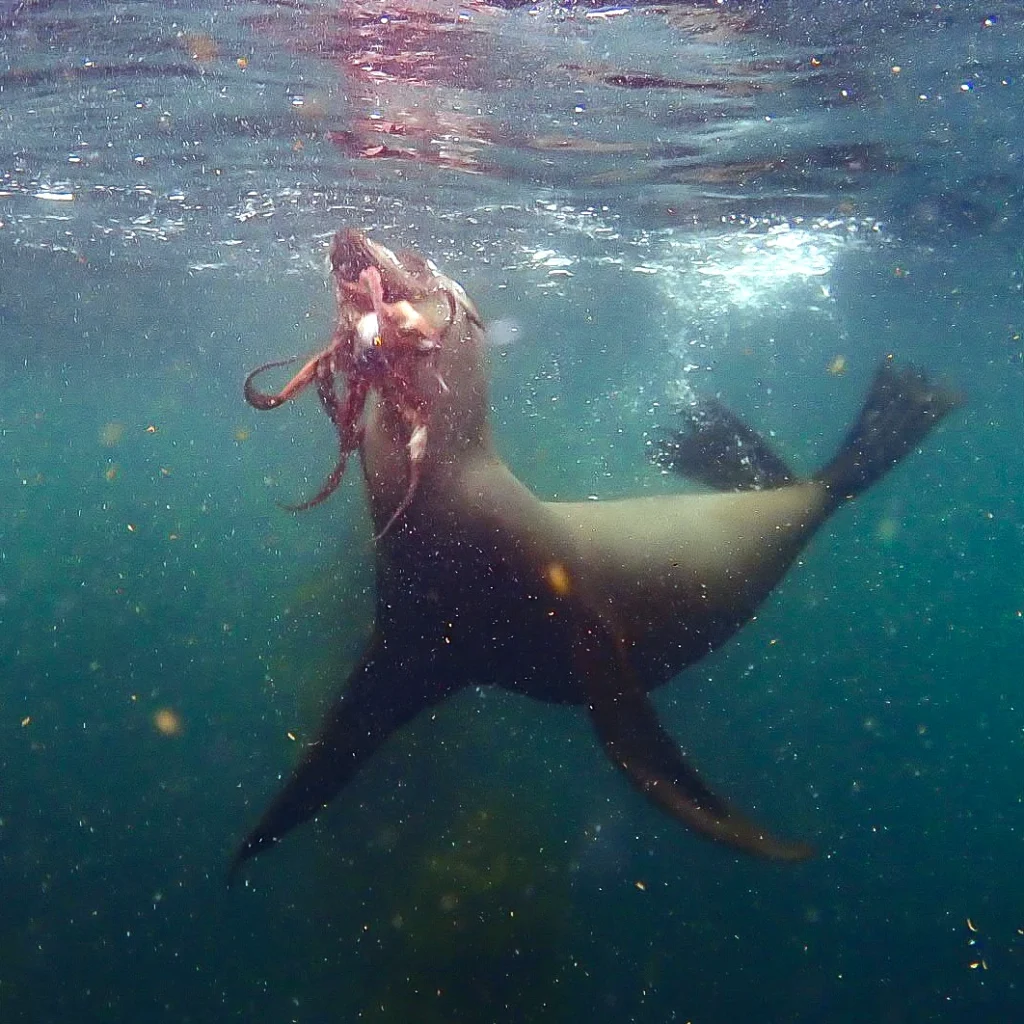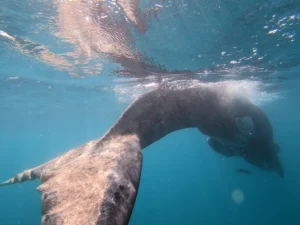Despite being known most affectionately as puppies of the sea, there is more to seals than their playful demeanour and charismatic presence. In oceans across the globe, seals are a vital component of the food web and contribute to essential roles as keystone species within marine environments.
Seals are grouped into three distinct families, namely: eared seals (Otariidae), true seals (Phocidae) and walruses (Odobenidae). Eared seals, or otariids, include fur seals and sea lions. The South African (Cape) fur seal (Arctocephalus pusillus pusillus) is the only seal species native to the Southern African coastlines. These carnivorous mammals can be found in colonies on shorelines, peninsulas and islands from Algoa Bay on the east coast of South Africa to Cape Fria on the Namibian coast. As the name suggests, eared seals such as the Cape fur seal are distinguishable by their external ear flaps. They are further differentiated from the true seal family by large, powerful fore flippers and rotational back flippers, allowing for increased mobility on land and at sea.

Cape fur seals are insulated by a thick layer of subcutaneous fat and a double coat. They are therefore able to spend the majority of their time at sea, hunting shoaling fish, crustaceans and octopus. Groups of up to 20 individuals often work together to hunt fish and can dive up to 200m in pursuit of prey! As they are only semi-aquatic, Cape fur seals spend a portion of their time on land, while resting, raising young and mating.

There are approximately 25 cape fur seal breeding colonies and 9 non-breeding colonies along the southern African coastline. During October each year, bull males come ashore and establish their territories at these colonies, so by the time the females arrive a month later, they can initiate harems of approximately 50 females in their given area. Soon after that, females give birth to pups from the previous mating season and then mate with the dominant bull. The female will delay fertilisation for four months, until approximately eight months before the next breeding season, so that the gestation period comes to an end as they come ashore at the colony. Seal pups are milk-fed by their mothers for six months and are unable to enter the water during this time as they are born without insulating fat. After a year, the pups gain independence and can venture away from their mothers’ care.
As a large carnivore, the Cape fur seal has few natural predators. At sea, their primary predator is the great white shark (Carcharodon carcharias). Many seal colonies on the west coast and Namibia are located in desolate areas, and so also face the possibility of terrestrial predation by jackals and hyenas. That being said, the greatest terrestrial threat to the Cape fur seal occurred during the commercial harvesting of seal populations for their pelt between the 17th and 19th centuries. During the height of the sealing era, Cape fur seal populations dropped to less than 100 000 individuals, with many breeding colonies eliminated completely. The issue was however recognized, and in 1973, the Sea Birds and Seals Protection Act was implemented, rendering the hunting of seals illegal in South Africa.
Although the Cape fur seal population has risen to 1 060 000 strong, the controversial history between humans and seals continues, and sadly new challenges have emerged. Many fisheries see seals as a direct threat to fishing stocks in terms of competition for shared resources. They have been labelled as pests due to conflicts during fishing operations, resulting in seals being gaffed or shot in fishing grounds. The relationship between fisheries and cape fur seals requires intensive conservation management in order to seek long-term viable socio-ecological solutions.

The Cape fur seal is an intelligent mammal and naturally curious, often engaging with scuba divers, freedivers and snorkelers around the Cape Peninsula, with colonies at Duiker Island and Strawberry Rocks along the Atlantic Seaboard frequently sought out by ocean goers. As sweet as their wide eyes and enthusiastic demeanour, it’s worth remembering that they are still wild animals and therefore unpredictable. It is imperative to treat seals with respect and careful consideration while encountering them. It is best to engage calmly, with slow, intentional movements, and maintain distance between you and the seal should you find yourself in an interaction. Be sure to keep your fingers tucked away as a precaution too!



